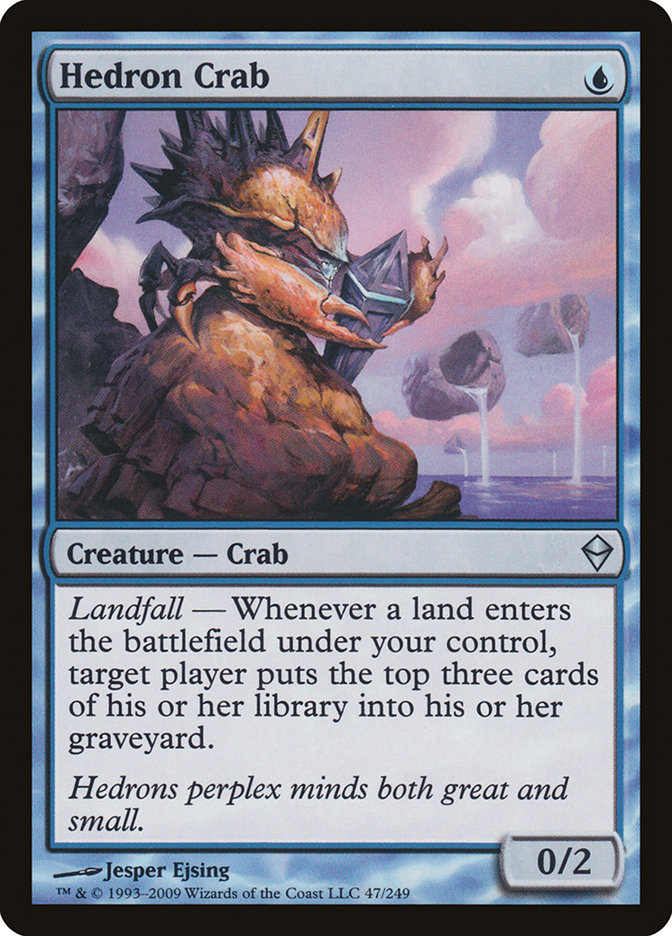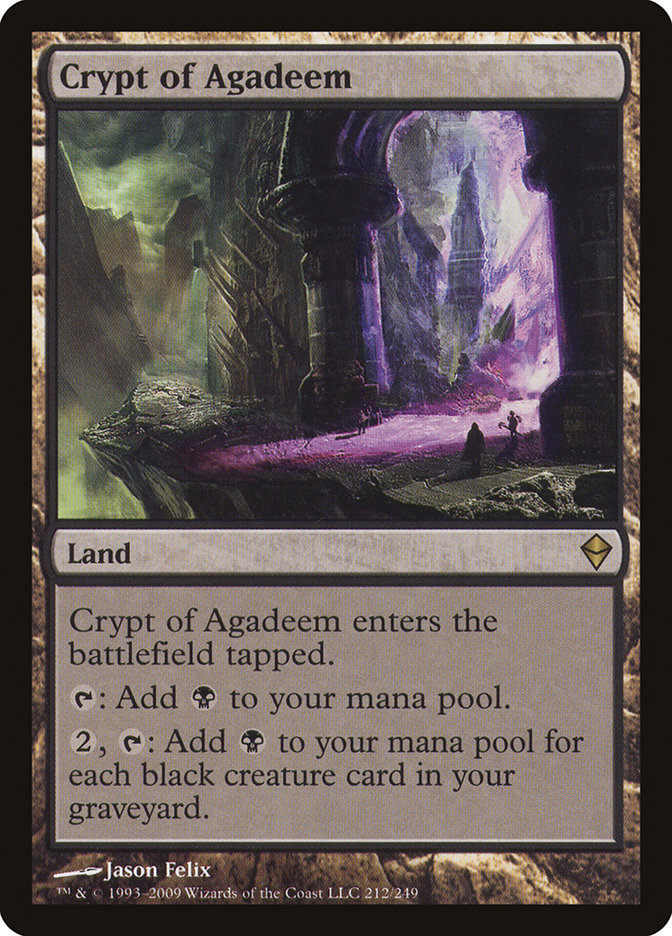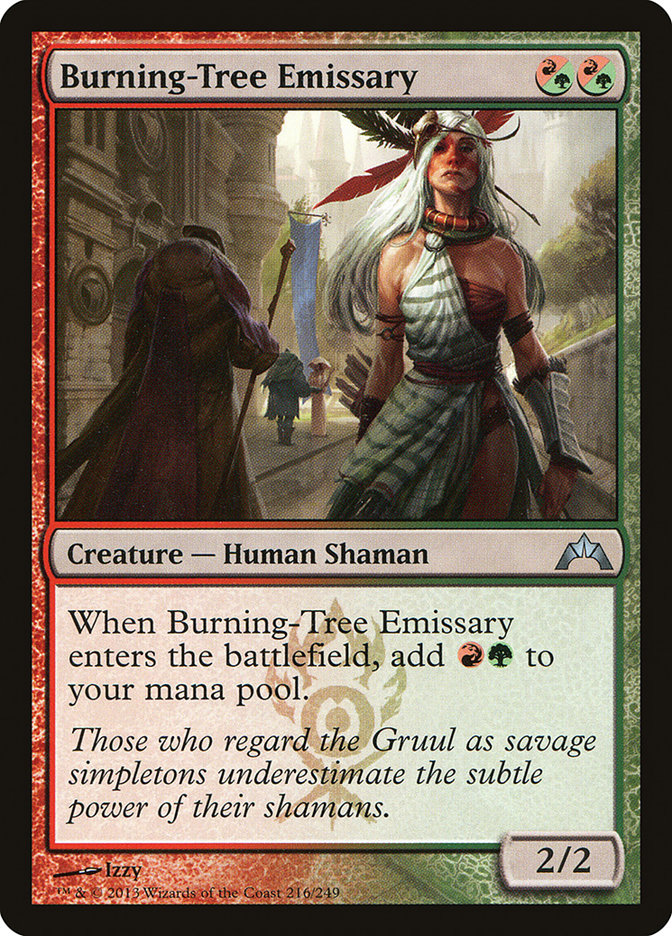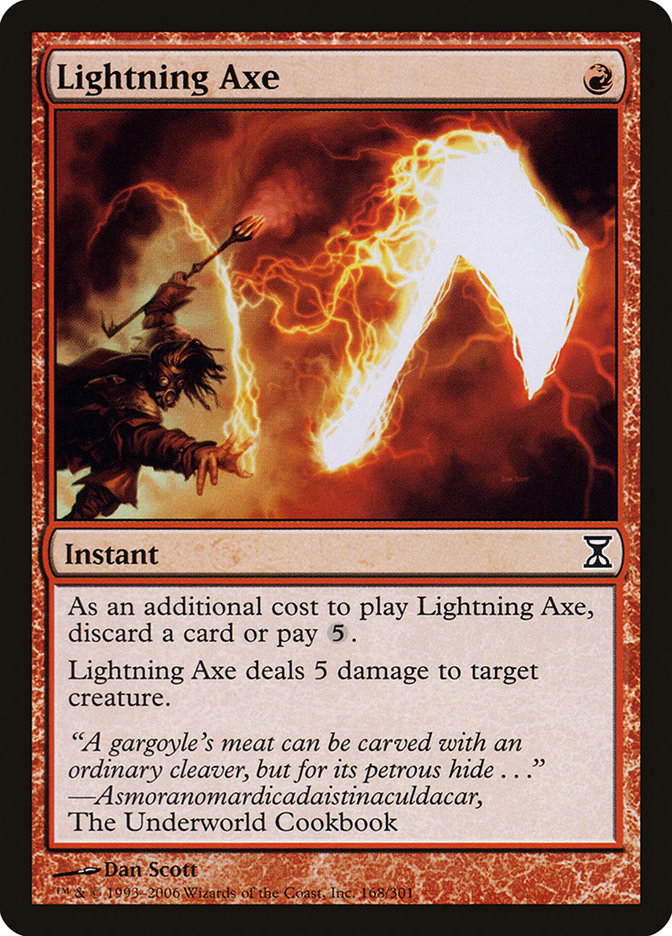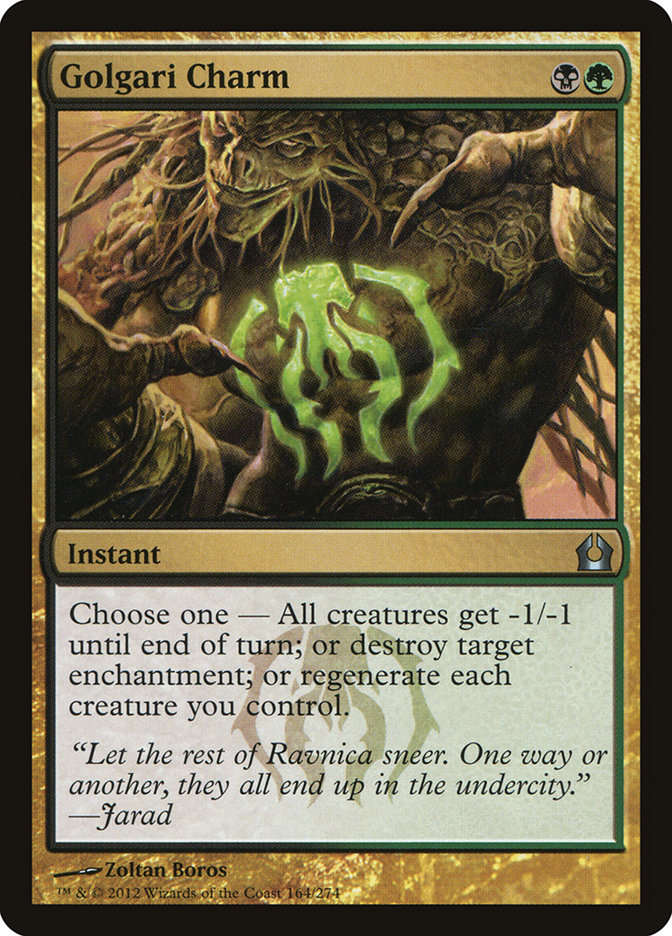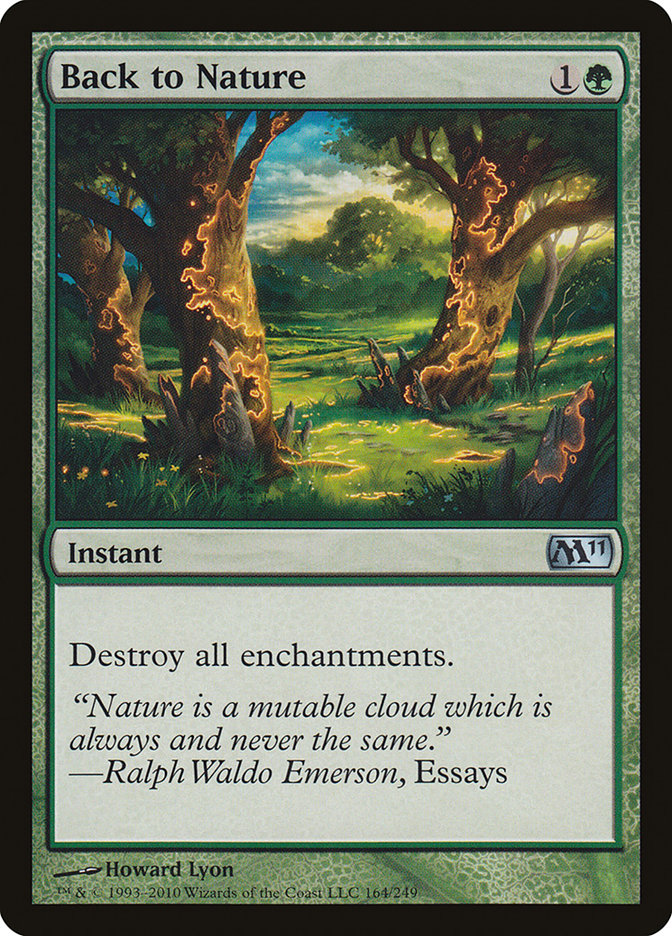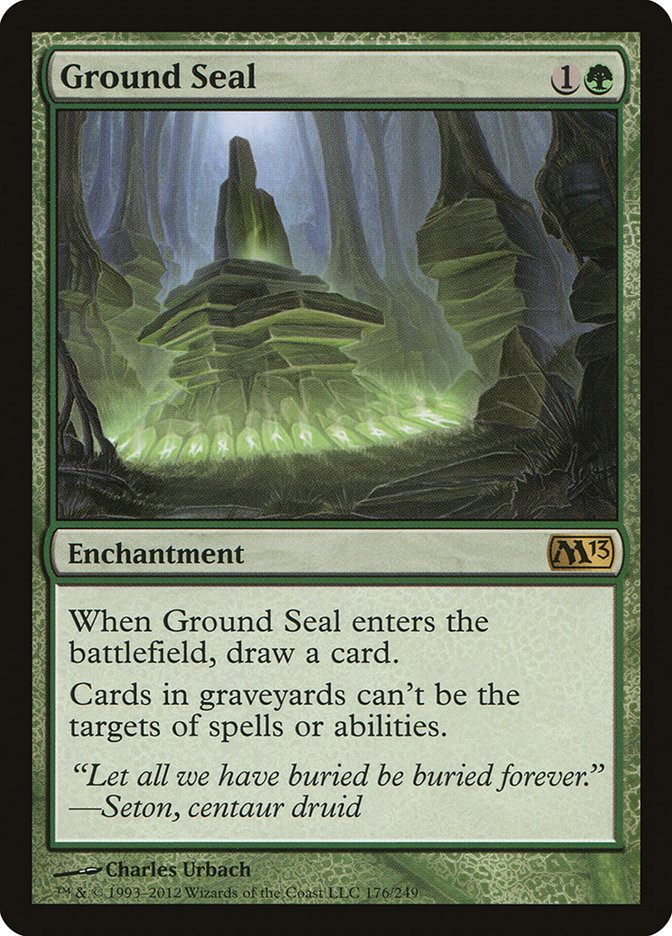Grand Prix Miami has come and gone; the next big events are the SCG Invitational in New Jersey and Grand Prix Kansas City. This GP catches my attention since it’s a rare off-season large Modern event. I like Modern a lot and am happy to see it grow successfully over the last two years.
Do you remember midsummer Magic Online Extended Daily Events? Doubtful. Modern Daily Events happen every day now, and my local store hosts weekly Modern tournaments with interesting and diverse metagames. Modern Masters at least partially solved card availability problems, making the barrier to entry much more affordable, but the format still needs regular large events to grow healthy and consistently. It probably isn’t ready for SCG Opens right now (I hope it will be someday), but a Grand Prix is exactly what the format needs.
Ari Lax recently wrote a comprehensive guide to the format that I highly recommend reading. It’s singlehandedly worth buying Premium if you don’t have it and will significantly help if you’re going to play in Grand Prix Kansas City or if Modern Masters has raised your interest in the format and you want to go to Modern FNM. The format, however, is astonishingly diverse and contains so many unexplored opportunities that a single article, even an excellent one, couldn’t hope to cover them all. My target for today is to direct your attention to that bunch of underrepresented Modern decks. The commonality among them is very interesting and potentially powerful: the graveyard.
The graveyard has always been an attractive way to generate an unusual advantage, breaking stereotypes about in-game zones of Magic and doing so in very elegant manner. Wizards totally understands that and consistently supports players trying to create something different. Graveyard-based cards are sometimes weak (see: Splinterfright) or degeneratively powerful (see: Dread Return), but they are mostly fine (see: Unburial Rites or Snapcaster Mage).
Modern has enough tools to exploit the graveyard, from the occasional use in Melira Pod combo to powerful engines like Past in Flames / Pyromancer Ascension and Gifts Ungiven. Goryo’s Vengeance is legal (despite the creation of inconsistent but very powerful archetype), Vengevine sees play from time to time, and there’s a place for cards like Harvest Pyre and for one of the most powerful mechanics ever printed:
Dredge.
That single word is enough to terrify Magic players. Bridge from Below, once powerful, just caused some raised eyebrows when reprinted in Modern Masters. Does Wizards of the Coast want Dredge to be playable again? As a deck, doubtful, but as a mechanic, why not?
The problem with dredge is that it’s unbalanced and thus hard to keep somewhere between unplayable and broken. The current Modern ban list includes Golgari Grave-Troll and Dread Return as possible finishers, but all the key cards of the engine are still intact: good dredgers, Bridge from Below, and Narcomoeba. Modern doesn’t include cards like Cabal Therapy or other ways to win on turn two but has Faithless Looting and Hedron Crab.
A good starting hand could allow dredging massively on turn 2 and then doing something unfair on turn 3. Good turn 2 enablers are Ideas Unbound and Glimpse the Unthinkable—or maybe Grisly Salvage if your deck requires something certain to be put into your hand. Unfortunately, you have to draw well to make these ideal starts real, and the fact that Unburial Rites cost 3W doesn’t make things easier. Trying to revive old Dredge decks as is, we come to a concept of something with relatively few lands and many dredgers but with the necessity of playing a fourth land on the fourth turn.
Slower decks aren’t playable in Modern because any opponent will either beat you or hate you out of the game by turn 5. Crypt of Agadeem is Standard legal, but it’s so narrow that I failed to build something playable with it. Sure, there are Fatestitcher and Extractor Demon, but it’s impossible to win during a single turn and opponents will not give you a second chance. A Modern-playable Dredge deck needs a cheaper finisher to be playable.
Graveyard-based decks saw fringe play during PTQ season, but players rarely put enough effort in Modern decks outside of it. Two sets were released since the end of the season, and two more await us before the following one. What has changed, and what could make graveyard-based decks better? Two cards:
Beck is a possible substitute for Glimpse of Nature in Elves Combo (which hasn’t emerged despite many expectations), but Beck’s text is slightly different from Glimpse’s, which makes it promising for a Dredge deck. The Bridge from Below engine doesn’t cast spells in the process (which would make Grapeshot a legitimate win condition), but Beck allows you to extract huge advantage from creatures coming to play.
Gavin Verhey recently wrote an article on the mothership about this deck.
Creatures (20)
Lands (18)
Spells (22)

That’s more or less a classic Dredge deck but with Blasting Station instead of Dread Return. For those who are unfamiliar with the combo, it works this way:
1) You put some Narcomoebas onto the battlefield through dredging (simultaneously some Bloodghasts and at least one copy of Bridge from Below come to the graveyard).
2) You sacrifice these creatures by Blasting Station with Bridge from Below in your graveyard.
3) Each sacrifice effect deals one damage and generates some Zombie tokens.
4) Each Zombie token coming to the battlefield triggers the untap of Blasting Station and draws you a card via Beck (and you can replace this draw with dredge).
5) Dredging a good part of your library, you’ll hit more Narcomoebas, Bloodghasts, and Bridges. Once you’ve hit all you can, you make a land drop to revive your Vampires and repeat the process. This isn’t an infinite loop, but your chances to deal enough damage to finish opponent are good enough. Excessive Bridge From Belows allow sacrificing Zombie tokens in response to the next ones (remember that each Zombie comes into play separately).
In the ideal circumstances, you play Blasting Station on turn 3 and cast Beck // Call and Faithless Looting on turn 4, but the deck is a little bit slower in reality, which seems to be a problem in a format full of Deceiver Exarch tokens on battlefields and copies of Grapeshot in stacks. Another problem is that you don’t always win even if you go off; it’s very possible to fizzle by not hitting the second Bridge From Below in time or by not having a land drop for Bloodghasts.
What would I alter in Gavin’s deck? First and foremost, I dislike four Ideas Unbounds; you rarely want to draw two, and it’s hard to cast it mid-combo even in a very long game. From the other side, the deck isn’t vulnerable to Deathrite Shaman mid-combo, but the little Elf is able to ruin our preparation. So I’d cut a copy of Ideas Unbound and a single Darkblast for a pair of Lightning Axes.
Another possible change for situations where you’re likely to go into the mid or late game is a pair of Goblin Bushwhackers. Blasting Station deals one damage for each sacrificed creature, while the Goblin allows dealing two. So if you have excessive mana, you could actually draw cards with Beck // Call and find Goblin Bushwhacker for the same turn win despite being short on sacrifice targets. This doesn’t work very well with the primary game plan, but Dredge acts as an Imp/Zombie beatdown deck more often than you might imagine, so a pair of Bushwhackers could be worth playing.
A sideboard for the deck could include Gnaw to the Bone and Ancient Grudge (for obvious reasons), Pithing Needle (against Splinter Twin and Deathrite Shaman), Ignorant Bliss (to save Blasting Station or Beck // Call and to better prepare for the crucial turn), and Dismember or Lighting Axe (to beat Deathrite Shaman). Deathrite Shaman would also be worth playing maindeck as very effective mana acceleration and an alternative win condition to support Blasting Station.
That’s all for pure Dredge, and just a little aside lies between us and the next station in the lands of the Burning-Tree clan. This aside is another possible application of Beck. No, I’m not going to post decklist of Elves Combo; I’m going to mention another pet deck: Heartless Summoning. Modern includes a funny engine of two-mana enchantments and a pair of Myr Retrievers. This engine creates infinite storm for free but requires another card as a win condition. Beck // Call is a fine way to draw your deck in the process even if the required mana base is four-colored (blue and green for Beck, black for summoning, and red for Grapeshot).
The main problem of this engine isn’t the colors but the requirement of having two copies of Myr Retriever, and I haven’t solved it yet. You are not required to have both Myrs in hand before going off, so there could be a way to exploit cards like Chromatic Star, but I have nothing to offer except for the discussion of your ideas, so let’s go further.
Burning-Tree Emissary is a powerhouse in Standard because it allows you to cast two creatures on turn 2 and gain a huge tempo advantage. Casting two creatures during a single turn in Modern? Do you have the same thought I do?
Ladies and gentlemen, Veeeeeeng…wait for it…VINE!
Vengevine is relatively fair on its own, but it can get completely out of hand with the appropriate support. The recurring Elemental was very good with Bloodbraid Elf in Standard and “small” Extended, it led Survival for the Fittest getting banned in Legacy, and multiple copies are good for winning on turn 4 if you able to trigger them. However, some sort of free stuff or mana acceleration is needed to fill the graveyard and trigger Vengevines so early—and Burning-Tree Emissary could easily be the missing piece of the puzzle. I spent a good amount of time on my Dead Vegetables deck, and I’m happy to present the newest version and hope it will not end up in my Pet Sematary this time.
Creatures (26)
- 2 Golgari Thug
- 4 Bloodghast
- 2 Goblin Bushwhacker
- 4 Vengevine
- 4 Gravecrawler
- 3 Lotleth Troll
- 4 Deathrite Shaman
- 3 Burning-Tree Emissary
Lands (18)
Spells (16)
Sideboard

The deck contains only two creatures with dredge, but it’s still a Dredge-like deck at heart. The idea is to fill the graveyard with Vengevines and Bloodghasts and then smash the opponent’s face. The main difference between so-called Dredgevine and “classic” Dredge isn’t only the mechanic but also the number of cards needed to go off. This deck typically requires much less and is thus worse suited for digging. “Worse,” however, still means that you see enough to justify having less than four copies of important cards like Lotleth Troll and Goblin Bushwhacker.
The dredge cards are for relatively long games; Golgari Thug is a cheap enabler on its own, so I chose it over Stinkweed Imp (but don’t underestimate deathtouch since it could be very useful too). The best sequence of actions includes a land drop to unearth Bloodghast, Burning-Tree Emissary, Manamorphose, and Goblin Bushwhacker to trigger Vengevine. That’s as much as thirteen damage on turn 3! The deck can also operate in “fair” mode to beat Deathrite Shaman in midrange decks, which makes it more attractive than all-in combo with Bridge From Below.
The deck tries to be pure combo pre-board and win as fast as possible, which means turn 4 relatively often, especially with acceleration provided by Deathrite Shaman or Wild Cantor, which is also playable in such a deck. Burning-Tree Emissary is truly great here because it trumps the lack of mana that usually slows the deck for a turn. However, everything has its cost, and the cost of playing Emissary is Manamorphose necessary for casting black creatures after the little Gruul Shaman. Emissary is typically cast later than turn 2 so you can have black mana produced by lands and spend red for Faithless Looting or Lightning Axe, but I’ve still found some copies of Manamorphose necessary. Maybe three and not two, but that’s a subject for fine-tuning.
Burning-Tree Emissary itself isn’t a four-of because you don’t want to cast it on the second turn. That’s also true of Lotleth Troll, which is fine on turn 2 but much better if you can leave mana up for regeneration. Also note that you normally see many cards each game due to digging, so playing less than four of your important cards is ok (that’s also why eight Zombies is enough).
Utility cards include Lighting Axe to deal with troublesome creatures, to get rid of excessive cards in hand, and to help to fill the graveyard. The notable card is Grisly Salvage, which has been omitted by some deckbuilders. Salvage looks like it’s interchangeable with another dredger, but it works very different and is crucial for early wins since it helps you simultaneously fill the graveyard while putting missing pieces into your hand. This deck in contrast to proper Dredge uses both its hand and graveyard and requires the appropriate tools.
Post-board you generally become a little bit slower in favor of hate for opposing combo decks or Liliana of the Veil; Deathrite Shaman into Liliana is still among the most powerful starts in the format, especially when your card to discard is Vengevine. Most cards you side in are neither creatures nor lands, so I can see some Grisly Salvages being boarded out. Other potential sideboard cards are Golgari Charm (all three modes are surprisingly relevant among Lingering Souls, Rest in Peace, and Supreme Verdict), Back to Nature (Slippery Bogle is a force on Magic Online), and Ground Seal for the very near future.
The future of graveyard-based decks in Modern doesn’t look bright; Scavenging Ooze will surely become a powerhouse of the format and seriously affect not only graveyard-based decks but also against monsters like Melira Pod, Storm, and Gifts Ungiven. However, if any card becomes too annoying, it gets hated out. Deathrite Shaman is a very powerful tool, but it didn’t oust Melira and Storm from the format. Scavenging Ooze is even more powerful, but it’s also beatable. I don’t think that the graveyard will stop being a valuable resource in Modern. Assuming that you want to go off on turn 4, Ooze will be able to eat two-to-three cards, which isn’t anything unaffordable. Yes, you’ll have to pay more attention to cheap answers, but that’s the destiny of all combo decks.
One more note about the M14 rules update is that it will cause reevaluations beyond legendary creatures and graveyard-based strategies. I’ve mentioned Extractor Demon as a win condition, and cards like Sanity Grinding exist in Modern too; however, the new rules allow your opponent to add fifteen cards to the deck post-board, which will make milling strategies significantly worse. That’s not a reason to skip these ideas completely, just a thing to think about alongside other interesting ideas for Modern decks.
A good example of a graveyard-based deck is Varolz, the Scar-Striped and Death’s Shadow. I still haven’t find a shell that satisfies me (mostly because it’s hard to create a backup to make the deck more reliable), but I’d be happy to read your ideas and thoughts about that subject.
Good luck to everyone playing this weekend, and never stop brewing!


